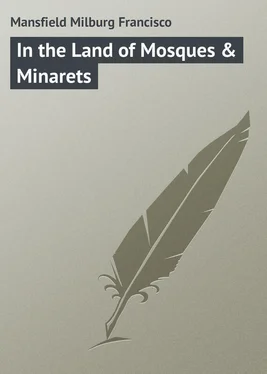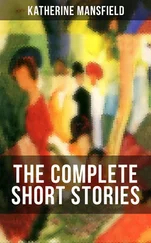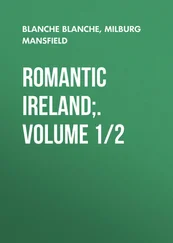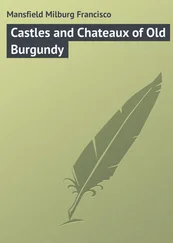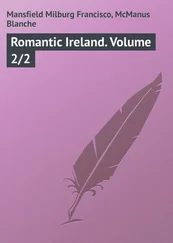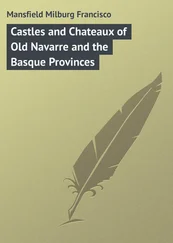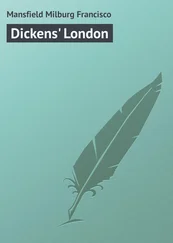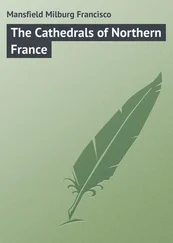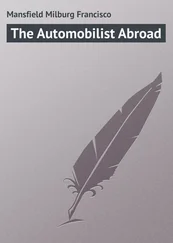Milburg Mansfield - In the Land of Mosques & Minarets
Здесь есть возможность читать онлайн «Milburg Mansfield - In the Land of Mosques & Minarets» — ознакомительный отрывок электронной книги совершенно бесплатно, а после прочтения отрывка купить полную версию. В некоторых случаях можно слушать аудио, скачать через торрент в формате fb2 и присутствует краткое содержание. ISBN: , Жанр: foreign_prose, Путешествия и география, на английском языке. Описание произведения, (предисловие) а так же отзывы посетителей доступны на портале библиотеки ЛибКат.
- Название:In the Land of Mosques & Minarets
- Автор:
- Жанр:
- Год:неизвестен
- ISBN:http://www.gutenberg.org/ebooks/46705
- Рейтинг книги:5 / 5. Голосов: 1
-
Избранное:Добавить в избранное
- Отзывы:
-
Ваша оценка:
- 100
- 1
- 2
- 3
- 4
- 5
In the Land of Mosques & Minarets: краткое содержание, описание и аннотация
Предлагаем к чтению аннотацию, описание, краткое содержание или предисловие (зависит от того, что написал сам автор книги «In the Land of Mosques & Minarets»). Если вы не нашли необходимую информацию о книге — напишите в комментариях, мы постараемся отыскать её.
In the Land of Mosques & Minarets — читать онлайн ознакомительный отрывок
Ниже представлен текст книги, разбитый по страницам. Система сохранения места последней прочитанной страницы, позволяет с удобством читать онлайн бесплатно книгу «In the Land of Mosques & Minarets», без необходимости каждый раз заново искать на чём Вы остановились. Поставьте закладку, и сможете в любой момент перейти на страницу, на которой закончили чтение.
Интервал:
Закладка:
All is peace and concord within, however, in spite of the small talk of the cafés; and the Arab and European live side by side, each enjoying practically the same rights and protection that they would if they lived in suburban Paris.
The Caïd or Sheik or head man of a tribe is the go-between in all that concerns the affairs of the native with the French government.
The name Caïd was formerly given to the governors of the provinces of the Barbary States, but to-day that individual has absolutely disappeared, though he still remains as an administrator of French law, under the surveillance of the military government. In reality the Caïd still remains the official head of his tribe, and in this position is sustained by the French authorities.
The Arab has adopted the new order of things very graciously, but he can’t get over his ancient desire to hoard gold; and, for that reason, no Algerian gold coin exists, and there is no gold in circulation to speak of. The Arab, when he gets it, buries it, forgets where, or dies and forgets to tell any one where, which is the same thing, and thus a certain very considerable amount is lost to circulation.
Paper money, in values of twenty and fifty francs, takes the place of gold; the Arab thinks that it is something that is perishable, and accordingly spends it and keeps the country prosperous. The French understand the Arab and his foibles; there is no doubt about that. They solved the question of a circulating currency in Algeria. New York and Washington representatives of haute finance might take a few lessons here.
With regard to the money question, the stranger in Algeria must beware of false and non-current coin. Anything that’s a coin looks good to an Arab, and for that reason a large amount of spurious stuff is in circulation. It was originally made by counterfeiters to gull the native, but to-day the stranger gets his share, or more than his share.
To replace the gold “ louis ” of France, the Banque d’Algérie issues “shin-plasters” of twenty francs. They are convenient, but one must get rid of them before leaving the country or else sell them to a money changer at a discount. These Algerian bank-notes now pass current in Tunisia, a branch of the parent bank having recently been opened there.
The commercial possibilities of Algeria have hardly, as yet, begun to be exploited, though the wine and wheat-growing lands are highly developed; and, since their opening, have suffered no lack of prosperity, save for a plague of phylloxera which set back the vines on one occasion, and a plague of locusts which one day devastated almost the entire region of the wheat-growing plateaux. It was then the Arabs became locust-eaters, though indeed they are not become a cult as in Japan. With the Arab it was a case of eating locusts or nothing, for there was no grain.
This plague of locusts fell upon the province of Constantine in 1885, and from Laghouat to Bou-Saada, and from Kenchela to Aumale they were brought in myriads by the sirocco of the desert from no one knows where.
For two years these great cereal-growing areas were cleared of their crops as though a wild-fire had passed over them, until finally the government by strenuous efforts, and the employment of many thousands of labourers, was able to control and arrest the march of the plague.
During this period many of the new colonists saw their utmost resources disappear; but gallantly they took up their task anew, and for the past dozen years only occasional slight recurrences of the pest have been noted, and they, fortunately, have been suppressed as they appeared.
Besides wheat and wine, tobacco is an almost equal source of profit to Algeria. In France no one may grow a tobacco plant, even as an embellishment to his garden-plot, without first informing the excise authorities, who, afterwards, will come around periodically and count the leaves. In Africa the tobacco crop is something that brings peace and plenty to any who will cultivate it judiciously, for the consumption of the weed is great.
Manufactured tobacco is cheap in Algeria. Neither cigars, cigarettes nor pipe mixtures, nor snuff either, pay any excise duties; and even foreign tobaccos, which mostly come from Hungary and the Turkish provinces, pay very little.
Two-thirds of the Algerian manufactured product is made from home-grown tobacco, and a very large quantity of the same is sent to France to be sold as “Maryland;” though, indeed, if the original plants ever came from the other side of the water, it was by a very roundabout route. Certainly the broom-corn tobacco of France does not resemble that of Maryland in the least. The hope of France and her colonies is to grow all the tobacco consumed within her frontiers, whether it is labelled “Maryland,” “Turkish” or “Scaferlati.” The French government puts out some awful stuff it calls tobacco and sells under fancy names.
The tobacco tax in Algeria is nil , and that on wine is nearly so. Four sous a hectolitre (100 litres ) is not a heavy tax to pay, though when it was first applied (in 1907) it was the excuse for the retail wine dealer (who in Algeria is but human, when he seeks to make what profit he can) to add two sous to the price of his wine per litre . There is a law in France against unfair trading, and the same applies to Algeria. It has been a dead law in many places for many years, but when a tax of four sous a hectolitre , originally paid to the state, by the dealer, finally came out of the consumer’s pocket as ten francs, an increase of 5,000 per cent., popular clamour and threats of the law caused the dealer to drop back to his original price. This is the way Algeria protects its growing wine industry. Publicists and economists elsewhere should study the system.
The African landscape is very simple and very expressive, severe but not sad, lively but not gay. The great level horizon bars the way south towards the wastes of the Sahara, and the mountains of the Atlas are ever present nearer at hand. The desert of romance, le vrai désert , is still a long way off; and, though there is now a macadamized road to Bou-Saada and Biskra, and a railway to Figuig and beyond, civilization is still only at the vestibule of the Sahara. The real development and exploitation of North Africa and its peoples and riches is yet to come.
As for the climate, that of California is undoubtedly superior to that of Algeria, but the topographical and agricultural characteristics are much the same. The greatest difference which will be remarked by an American crossing Algeria from Oran to Souk-Ahras will be the distinct “foreign note” of the installation of its farming communities. Haystacks are plastered over with mud; carts are drawn by mules or horses hitched tandemwise, three, four or five on end, and the carts are mostly two-wheeled at that. There are no fences and no great barns for stocking fodder or sheltering cattle; the farmhouses are all of stone, bare or stucco-covered, and range in colour from sky-blue to pale pink and vivid yellow. There is some American farming machinery in use, but the Arab son of the soil still largely works with the implements of Biblical times.
The winter of Algeria is the winter of Syria, of Japan, and reminiscent to some extent of California; perhaps not so mild on the whole, but still something of an approach thereto. Another contrast favourable to California is that in Algeria there is a lack of certain refinements of modern travel which are to be had in the “land of sunshine.” Winter, properly speaking, does not come to Algeria except on the high plateaux of the provinces of Oran, Alger and Constantine, and on the mountain peaks of the Atlas, and in Kabylie.
South of Algiers stretches the great plain of the Mitidja, which is like no other part of the earth’s surface so much as it is like Normandy with respect to its prairies, “la Beauce” for its wheat-fields and its grazing-grounds, and the Bordelais for its vineyards.
Читать дальшеИнтервал:
Закладка:
Похожие книги на «In the Land of Mosques & Minarets»
Представляем Вашему вниманию похожие книги на «In the Land of Mosques & Minarets» списком для выбора. Мы отобрали схожую по названию и смыслу литературу в надежде предоставить читателям больше вариантов отыскать новые, интересные, ещё непрочитанные произведения.
Обсуждение, отзывы о книге «In the Land of Mosques & Minarets» и просто собственные мнения читателей. Оставьте ваши комментарии, напишите, что Вы думаете о произведении, его смысле или главных героях. Укажите что конкретно понравилось, а что нет, и почему Вы так считаете.
